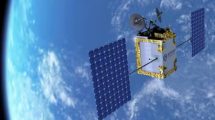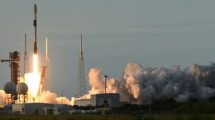 Alvaro Sánchez is CEO of Integrasys.
Alvaro Sánchez is CEO of Integrasys.
The Covid-19 outbreak compelled more people to work remotely. This, in turn, triggered a total transformation within the satellite industry, driving a revolution. COVID-19 also exposed the digital divide and when connectivity was needed, the satellite industry got down to work, launching new satellites into the LEO orbit.
LEO constellations open the door to real-time connectivity, any time and everywhere. LEO and MEO constellations will bring about a great array of connectivity possibilities as the new constellations use higher frequencies, such as Q and V bands, lower latency, and higher throughput, and gain. Perhaps their greatest advantage will be the automation of the network, (happening on the ground) which will enable them to have total automation in the design, deployment, monitoring and maintenance of the network.
In order to make the most out of these new developments in space, the ground terminal has an essential role to play in making automation happen, with the added value tools. A great deal of investment will be concentrated on developing the type of antennas that can receive and transmit satellite signals, efficiently in these constellations. The focus here will be the need to track multiple satellites simultaneously, as well as ensure fast deployment and seamless maintenance, enabling a massive user base, and markets.
The key features that the antenna sector is focusing on are being compact, flexible, and adaptable so they can be placed on any surface, totally customised for mobility, air, land, and maritime scenarios. Antennas that are flexible to ensure no human touch, require intelligence and smart software to be managed. Otherwise, their use will be similar to a parabolic old-fashioned antenna, without the possibility to work efficiently in this new space revolution.
The aim of the integration between new, small satellites of LEO constellations and the new antennas, is to enable automation and better network performance. As the new constellations are formed of a larger number of satellites, the design and link budget calculations must also be accurate for providing reliable links, wherever the user and satellite position are at a particular time. The new paradigm will require the constant link budget calculation as small satellite coverage is fully limited and the service needs to be accurate in order to provide an excellent SLA. The extension of each mega constellation will be determined by the design and architecture of the network.
Disruptive technical innovations within the ground segment are less common than in the space segment because it is not mandatory within the former to have an automated process as a human was always required. The new ecosystem, however, is based on an M2M end-to-end interaction, with the important presence of a cloud-based system in order to process data. The inclusion of ground technologies will make a huge difference, not only in time-to-market, but also in optimisation, and the use of resources. It will lower OPEX and make satellite services more affordable and mainstream. This is especially true within the mobility sector, which is now a big concern and a priority. Indeed, ground software will become a key enabler to manage new antennas and make all the network management process automated end-to-end. Having software integrated with the ACU enables the possibility of adjusting the antenna on the fly to a real-time need and ensuring that a remote setup is always on and maintained. The flexibility that these new solutions bring is essential not only because of the current situation where social distancing has become standard but because of the prevailing travel difficulties for installation and maintenance.
The Covid-19 outbreak has accelerated the inclusion of these new developments in the satellite and telecommunications industry. A connected world is not a utopia, but the combination of LEO constellations and ground technologies will enable full coverage and real-time operations. LEO companies will move towards bankruptcy if they do not adopt the right ground technology.
Alvaro Sánchez is CEO of Integrasys.














Add Comment